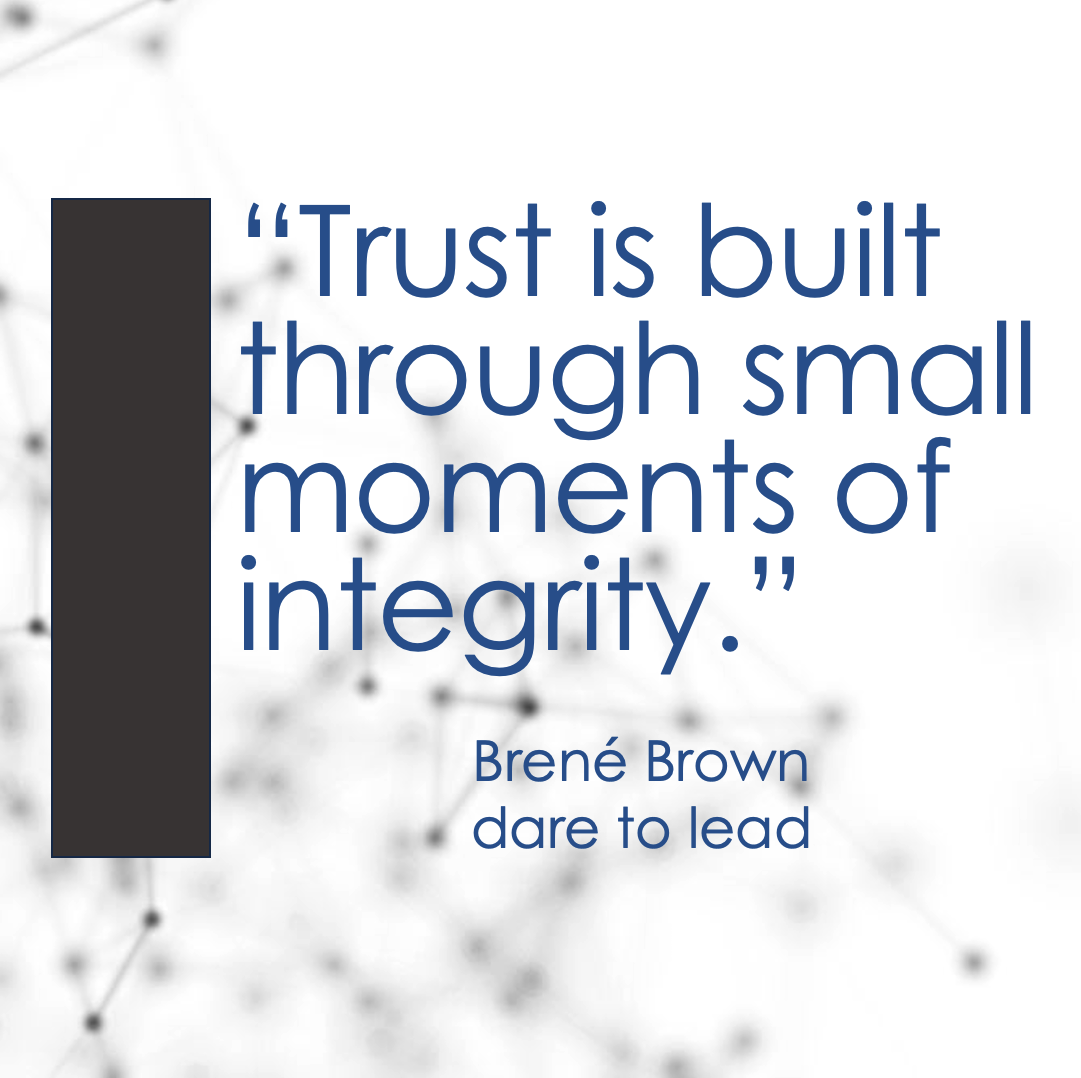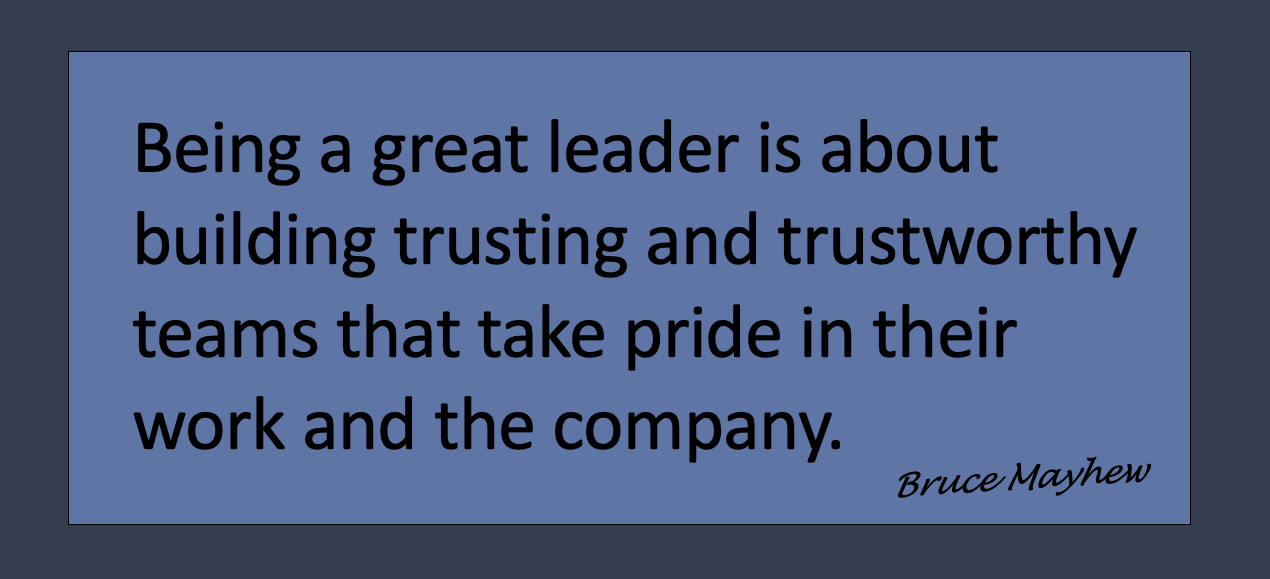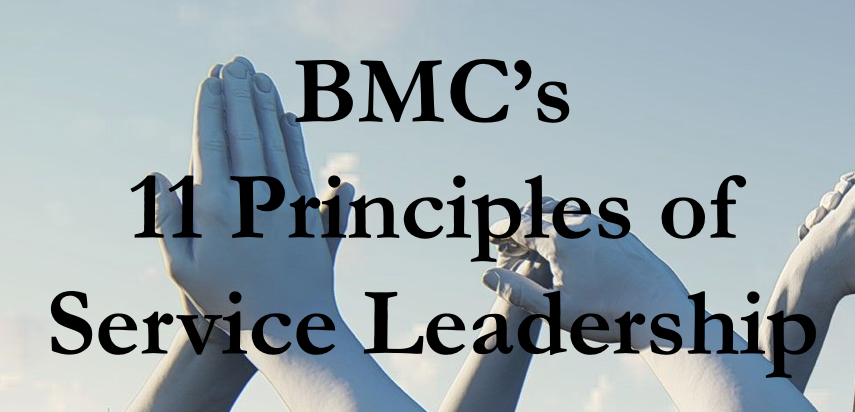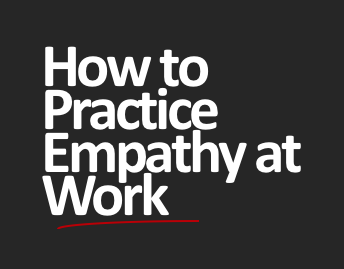Team Building Activities For Your In-Office or Hybrid Team
/Almost every client I work with has some variation of a hybrid work model; it is the new normal for most businesses. There is no doubt that in our post pandemic world, employees’ expectations have changed. Or should I say the dreams employees had for the last 30+ years for a hybrid workspace are the same, it’s just that employees whose work was able to pivot during the pandemic now have confidence and proof they can work remotely and be high-producing.
But whether the dream team you are part of has any remote qualities or not, all of our workspaces have become faster paced and more isolating, not to mention that more and more our teams are made up of unique, wonderful individuals from different generations and different backgrounds. So, in a workspace where much of our communication is by email or some type of instant message system, it has become more important to put plans in place to intentionally create a sense of community that invigorates a high-functioning and very enjoyable workspace. This means including team-building activities into your strategic plans.
What’s In It For The Company
When individuals and teams feel a sense of connection and are part of an inclusive, supportive, trusting workspace, they typically create higher quality work, are happier (find joy) with their work and are more loyal to the company. And the old saying two heads are better than one still rings true, especially when it comes to creativity and problem solving. Even introverted people want and need to feel they fit into the company culture, they need to feel they are important to the team, their boss and their product / service.
What’s In It For The Employee
The benefits of working / connecting in-person for the employee can actually quite important to an employees longer-term career success. Especially if you are new to your career, know that the more time you spend in-person with your coworkers, the greater the likely benefit to the experience you gather, your learning and therefore your career. I will address this more comprehensive post later this year. Feeling a sense of belonging and caring are big parts of our successful lives at work… and with or family and friends. Even the most introverted or independent people need to feel care for and cared by others - and in this case their teammates, suppliers and customers / clients.
We Can Do More Than a Get-Together
With hybrid work teams becoming increasingly popular, we must take extra effort to create opportunities for our teams to come together as we move away from more traditional in-person work environments. But we can do more that get them to come together for a lunch or for a meeting and hope for the best. We can build team connections and promote learning of each other and their professional expertise which is great for the company and the employee. And let’s face it, in today’s workplaces, our younger employees are looking for the companies they have chosen to work for and invest their career hours / years in, to invest back into their professional success, whether remote or in-person
Hybrid Activities Are Possible
When your team building activities include people who are remote, there is a risk of a bit less ‘connection’ being made than if they were in-person, but with the right planning, the right technology and the right event it will still add value. And, it’s still better than doing nothing at all. It is likely hybrid team building will also take a bit more effort and logistic coordination. Side note, if you are going to upgrade your tech in the next year or so, look for flexibility and ease and maximum remote participation engagement opportunities. As someone who has gone into many offices over the last few years, some systems are so complex they need an IT person on hand while others are easy plug in and play options.
Team Building Activity Examples
The following are 17 team-building activities, many of which I’ve used or seen being used that can build familiarity, harmony and trust. And to be honest, some I like, some I like a lot and some are not my cup of tea. Most of these activities can be done on a budget, ensuring that your hybrid employees remain engaged and connected on an ongoing basis!
I find team building activities as often having two main approaches. Both approaches build connection, but they do it in slightly different ways:
One where the primary focus is to help people get to know each other and discover how much they have in common
One has a primary focus on people accomplishing a task or problem solving together.
Finding the best activities for your team largely depends on what you are trying to accomplish and how big or small your team is. When planning to make team building a regular event, my preference is to often use activities that can be set up, competed, and taken down with ease as well as activities that cost little or nothing. This allows them to be repeated with your team again and again. And then, once or twice a year include a more elaborate event like training events or external group activities where food, travel, conference fees and/or hiring an external facilitator or corporate trainer may be required. And if there is a cost, invest wisely, show your team that their wellbeing, education, and career development is an investment you take seriously.
How do we build a sense of belonging within a hybrid or partially hybrid work model?
1. Explore and / or Re-energize Your Team / Company Values.
I like this team building activity a lot since it explores what your core values mean.
Can be done in person or virtually.
This exercise is easy, not physical and doesn’t take much preparation.
There is a lot of variability with this team building activity. How you do this largely depends on your goal(s), how large your team is and how much time you can spend in one session. The more people discuss what your values mean (or what values they think should be adopted), the more they will believe them and use them to make strategically aligned, and mutually beneficial decisions. For large groups, split participants into smaller groups of 4 or 6 people. When you have limited time, choose only one or two of your existing values to discuss. Do one or two others at a later meeting. Give your (or each) team 30 minutes to discuss what a value means from the following possibilities:
Your clients / customers
Your product
The customer service you offer
Instructions / user guide
As you would reference them in sales material or a sales call
During internal decision making if there are two or more opinions
To employee training
To hiring / onboarding
If you have multiple groups, when everyone comes back together, each team shares their ideas / input. Then, the whole group can find consensus. Listen for new approaches, solutions or even if new values arise. Encourage people to share their experiences or stories they have heard from other employees, customers and/or suppliers. Make note of those stories. It may not be important where the stories came from – and it may be better from a privacy perspective. Most often it is the story not the source that matters.
A follow-up option is to select one person from each group to form a sub-committee and over the next few weeks develop recommendations based on everyone’s input. Then, distribute this back to your broader team for their input.
I like this exercise because it can be used multiple times as you discuss all the values in your company / team. Once done about discussing what each value means you can start again and discuss how to improve on that behaviour / action given that value from a strategic review point of view.
2. Have a Week of Team Meetings
I like this team building activity, but you may miss some people on vacation or ill.
Can be done in person or virtually.
This exercise is easy, not physical and doesn’t take any preparation.
There is a lot of variability you can do with this team building activity. As the name says, book development meetings every day with your team. I recommend planning meetings at the same time – preferably first thing in the morning to discuss a specific topic (like values), or do an activity like play croquet in the hallways, make puzzles, or go for a walk, or on one day run a group croissant, bagel and coffee breakfast.. Most people are most creative and strategic in the mornings. Mornings also focus participants before they get busy with other priorities. The great part of this approach is your team does a lot of team building in short time. The unfortunate part is people who are sick or on vacation may be missed. Thia would be a good time to encourage virtual employees to come in the office on some days. Have fun with this. It is a good way to get a new team to know each other.
3. Find 4 Things in Common
I like this team building activity a lot.
Can be done in person or virtually.
This exercise is easy, not physical and doesn’t take any preparation.
Divide your group into subgroups of 4 to 6 people. I like to arrange people who work together and/or collaborate. This exercise builds familiarity. The idea is that the more your team members start realizing how much they have in common, the more they are likely to trust each other, collaborate, and communicate more effectively with each other.
Start by splitting participants into smaller groups of 3 or 4. Use larger groups if you have more time – and to add complexity. Ask each team to find 4 things they all have in common… outside of work. Ask them to be somewhat specific. For example, everyone eats lunch is too broad, but if pizza is everyone’s favourite food or none of them like pineapple on their pizza, that works. The beauty of this exercise is that not only do they find a few things they have in common; the process means they also discover so much more information about each other. When this happens instead of seeing Bruce as the Finance or IT guy, we suddenly start seeing him like someone who we have something in common with.
4. Go To Events Together
I like this team building activity a lot.
Can be done in person or virtually.
This exercise is easy, not physical and doesn’t take any preparation other than coordinating the event.
If you have teammates going to a conference or an event, try to get them to walk down together or sit next to each other on the flight, and for sure, experience workshops together. The shared experience will help them create a bond, and they will likely have casual conversation and get to know each other on the way. They will also likely have conversations specific to your industry or a project they are both involved in and together discover new approaches by talking with each other or from one of the speakers.
5. Shared Expertise
I like this team building activity a lot.
Can be done in person or virtually.
This exercise is usually easy, not physical but does take any preparation for one person or one team..
There are countless shared experiences. Not surprisingly I like the idea of bringing in an external speaker for skills training (like leadership, email etiquette or difficult conversations). If you decide to keep things internal, you can have a group meeting where different people or different departments share a 20-minute overview of something important in their department or specific focus or expertise.
For example, finance may want to give a refresher about how to prepare for the upcoming year end. Your people have a lot of expertise that they may not always be able to share – or easily share. You can also encourage your team members to showcase their unique skills and hobbies. Each month, give a chance for one team member to host an hour-long virtual “master class” on a topic they’re passionate about.
This allows team members to not only express their personal interests, but also learn new skills from one another.
6. Have a Leadership Fireside Chat
I like this team building activity a lot.
Can be done in person or virtually.
This exercise is easy, not physical and usually doesn’t take much preparation.
This is all about building trust and feeling like your leaders are part of the team and approachable.
The set-up can be variable to suite the location and/or the number of participants, but typically you will want to have one or a few leaders being very visible at table or on a few tall chairs. It may look like they are having a panel discussion. This is an opportunity for team members to ask questions either in person or they could submit them in writing in advance. Usually there are no restrictions to the questions if they are respectful and not overly personal. So, someone could ask what their favourite pastime is. They might also ask work-related questions, which is fine and should be answered clearly if the responses are not gossip, HR related about them or someone else, or some strategy related aspect that is not confirmed or not yet out in public.
7. Book Club or Movie Club
I like this team building activity.
Can be done in person or virtually.
This exercise is easy, not physical and takes very little preparation.
Book or Movie clubs are a great way for team members to learn about each other. This doesn’t have to be an all-in or nothing activity. For example, if you have a team of 10 people and 3 like to read, I’d encourage the 3 to form a club. They can start with selecting a book or movie. Then twice a month they can book a conference room or schedule a virtual call to discuss. I specifically like the idea of getting together over lunch – perhaps even bring in a special meal – this lets others see how much fun it is. And, if your team is hybrid, this gives club members an extra special reason to come into the office that day. There are many benefits to an entertainment club for your team, including having fun, bonding and improved trust.
Book Club With A Twist
I like this team building activity, and it can go a few ways.
Can be done in person or virtually.
This exercise is easy, not physical and takes very little preparation.
Let’s say you have a direct report of 6-people including you. Every two months (or whatever timeline you choose) one person recommends a book. The only criteria is it has to do with work. For example, it could be on Leadership, Time Management, Difficult Conversations.
The company buys one copy each for all 6 people who report into you and one more for the larger team library.
Then, for the first 4-weeks (as an example), everyone who reports into you is expected to read the book. On the 5th week there is a team meeting to share and discuss what each person has found most relevant about the book / the message. These points may be written up and placed with the book in the team library.
On week 6 there may be another team meeting about how to implement something from the book. Then, on week 8 or 9, it all starts over again with a new book.
Your larger team can each ‘check-out’ the library copy of the book out for 2-weeks. They can also recommend books for the library and/or the leaders.
8. Hybrid Scavenger Hunt and/or Clue Solving
I like this team building activity.
Can be done in person or virtually.
This exercise is easy, not physical and doesn’t take any preparation.
Divide your group into subgroups of 4 to 6 people. I like to arrange people who work together and/or collaborate.
Scavenger hunts should be a fun team-building activity and are great if you have people who are remote and in-person.
If you have people who are both remote and in-person, it works nicely to design teams to include both.
For your scavenger hunt or clue solve, have identical lists of both physical and on-line things and/or information to find, so both in-person and remote team members can add to the game.
These activities are usually great because they are mostly fun, support teamwork and collaboration, leadership, creativity, problem solving and most definitely… effective communication and managing expectations and problem-solving skills.
9. Play Jeopardy
I’m not a fan of activities like this that require a lot of set-up or potentially external software.
Can be done in person or virtually.
This exercise is easy, not physical.
Jeopardy is a classic game that most people know how to play.
You may want to divide your group into subgroups of 4 to 6 people. I like to arrange people who work together and/or collaborate. It is now possible to create a custom game of Jeopardy by using solutions like Fact Tile.
10. Play Bingo
I don’t mind this activity, but it does take a bit of set-up.
Can be done in person or virtually if people download bingo cards.
This exercise is easy, not physical. This game is all fun but is sometimes difficult to bring back to team learning or education.
You might want to divide your group into subgroups of 4 to 6 people. I like to arrange people who work together and/or collaborate.
Bingo is a classic game that virtually everyone knows how to play.
It adds to a bit of the fun if you can arrange prized for Bingo winners. It can include company or supplier merchandise to a half-day off to fun / joke gifts. IIt is now possible to find free online bingo cards using solutions like bingo blog post! Although I have not used it they also have an online Bingo number generator.
11. Don’t Peek, Blind Drawing
I like this team building activity because people learn about communication.
I’ve done it with clients, and it works well.
It costs virtually nothing and is easy to implement and/or scale up.
Pair up your team into pairs of 2 o r3 people. I like to arrange people who work together and/or collaborate. The beauty of smartphones and laptops allows this activity with people who are remote.
This fun activity reinforces the importance of listening and creativity and clearly demonstrates that two people can interpret information and instruction in very different ways, therefore the importance of responding and/or sharing back. It also is important to note that verbal communication is often far more accurate than just writing – but still has its challenges.
I like finding black & white drawings that are simple but will still be a bit of a challenge. I recommend giving instruction to participants that if they need to describe a flower, they cannot use the word flower. If they are drawing a wheel or a plane, they cannot use those words specifically either.
Have participants sit so they cannot see each other. Also, you do not want the speaker to see what the other person is drawing since that may influence their in-the-moment instruction. One person instructs and the other person draws. When they are done, and before they do a show and tell, I like to switch and have the drawer give instruction on a completely different picture. When all is done, reveal, laugh and discuss what they learned about communication.
12. Take A Walk
I do like this team building activity.
Can be done in person or virtually.
It costs nothing and is easy to implement and/or scale up. You can even turn it into a fun competition.
Pair up your team into pairs of two or more. The beauty of smartphones allows us to share a walk and have a conversation even when we have remote people so, it’s your option to create pairs of people who are both in-person, both remote or a mix of both. Why not have all three?
Have your pairs go for a walk together… with camera on. They can be looking at each other, or show / share where each other is walking and talk about what is interesting to them. If you are remote, perhaps take a walk around your garden and show it off. If you are downtown, take your partner on your favourite places for lunch, coffee – or a tour through the gym you go to. Spending time together helps create a bond and trust in the days and months that follow.
This team building activity builds familiarity, understanding of each other and trust which are important elements in any relationship.
13. Cooking Classes
I like this team building activity because people learn to communicate and usually have lots of fun.
It will be difficult to do in a hybrid environment.
It can cost a lot and be difficult to scale up.
It can take a fair amount of coordination.
I did one of these with one co-worker years ago. We planned it and paid for it on our own. I also did another with friends years later.
Cooking classes are a fun way to spend time getting to know other people and deepen relationships with coworkers and even friends and family. Usually, they require coworkers to take some time out of their own schedule The good thing is that usually people learn something, have fun and it cooking is often an activity where everyone is on a somewhat similar ability scale.
14. Potluck and or Cookbook Creation
I like this team building activity because people learn about each other.
Can be done in person or virtually… but for a taste experience it would be best if people could come into the office.
This exercise is easy, not physical and doesn’t take any preparation.
I did one of these when I was in college and two when I worked at an office.
I like this activity because it creates a level of familiarity and curiosity. If you end up creating a cookbook, you now have something you created to give to suppliers or customers which may increase the familiar relationships from this activity. Or you could invite suppliers or customers to participate.
An in-office potluck can be a lot of fun and you can make them theme oriented like desert or breakfast. One twist I did with friends at college was to have everyone bring in a main dish traditionally from their culture or that was a special / favourite dish from their family. A potluck can be a fun team-building activity where people get to know each other and build trust, but is a challenge if team mates need to stay remote.
15. Lunch Club
I like this team building activity, but it can take a fair amount of coordination.
Can be done in person or virtually.
This exercise is easy, not physical and doesn’t take any preparation.
I did one of these when I was in at work.
Block off time in your team’s calendars for an in-person, virtual or hybrid lunch club. You can each go your own way and pick up food or bring it in. Some of the fun of everyone bringing in whatever they like, people may learn about restaurants around the office they didn’t know about – or they may learn how good a cook you are. This can be a fun team-building activity where people get to know each other and build trust.
16. Casual Pre-Meeting Chat
Not my favourite team building activity.
Can be done in person or virtually.
This exercise is easy, not physical and doesn’t take any preparation.
Allow the first 5-minutes of meetings to be time where people talk casually. It is a low-key, casual way to develop familiarity with each other. This is not my favourite because I also value time management. I like meetings to start on time, stick to an agenda and end on time – or early. Pre-meeting chats also gives people permission to come to a meeting late because they know the official meeting will start late.
I like casual chat to happen more organically, so I would encourage people to walk to get a coffee together or have lunch together or spend the first 5-minutes in a day asking a coworker how their evening or morning was. A variation of this meeting idea that I do like is when people do arrive at meetings early, use this time to chat casually vs. picking up your smartphone and answering non-urgent email. I find this a very productive use of time until the meeting starts.
17. Ice Breaker Conversation Cards
Not my favourite team building activity.
Can be done in person or virtually.
There are professional cards like ‘Talking Point’ cards that can be purchase that have questions written on them. The conversation cards are meant to foster deeper connections and meaningful conversations between people / groups. The idea is you flip a card or choose a card and answer the question. It is a decent game to play to get to know the people on your team – however, for people who are reserved, new or who don’t fully trust the people they are playing with, it may feel a bit intrusive. A few examples of questions are:
What is inspiring you right now?
What do you wish you knew?
When do you feel most like yourself?
If all jobs paid the same, what job would you like?
Conclusion.
Have fun with these and most of all, let your people have fun. And like I said earlier, I like to try to get activities that build familiarity and trust as well as invest in their education and career by helping them learn.
NOTE: When I break teams into groups for discussions, I think about what my goal is. Sometimes I want to bring existing teams closer, so I arrange group members this way. Other times I want to build relationships between teams, so I make sure I mix up my group members with people from each company division.
Thank you for reading about Team Building Activities For Your In-Office or Hybrid Team. I know - it was a long post. I look forward to hearing from you if you have any questions.
Bruce
Other articles in this series include:
About Bruce and Bruce Mayhew Consulting.
Bruce is Corporate Trainer, Keynote Speaker and Executive Coach.
Bruce Mayhew Consulting specializes in customized Difficult Conversations, Crucial Conversations or Conflict Management Training, Email Etiquette Training, Leadership & New Leadership Development, Generational Differences, Time Management Training and other soft skills training solutions in Toronto and across Canada. Bruce is also an Executive Coach to a few select clients.
Bruce is an experienced motivational speaker in Toronto and has inspired audiences across Canada and within the USA and the UK. Bruce works hard to always make sure your training event, conference, retreat, or annual general meeting is a success.

























